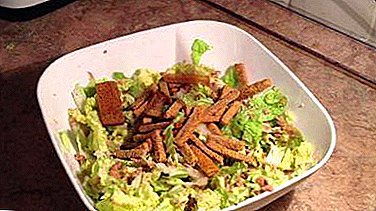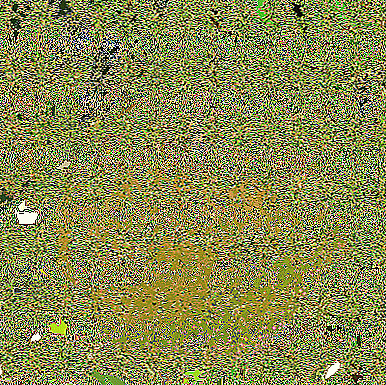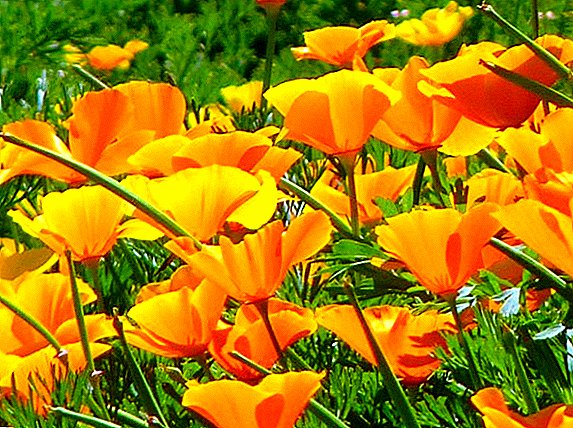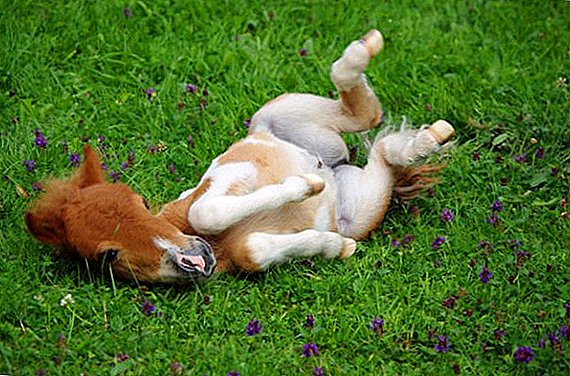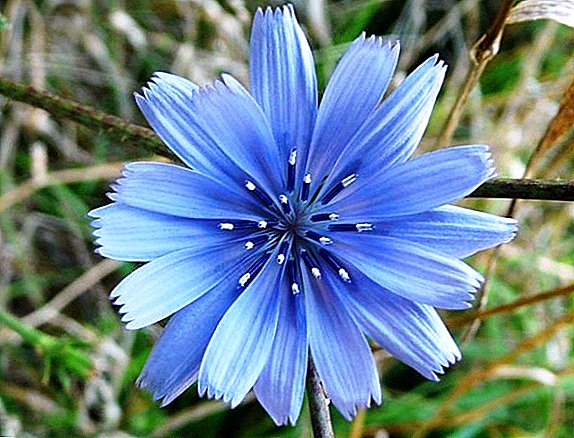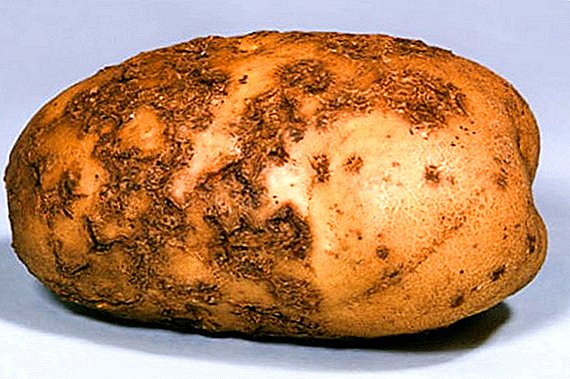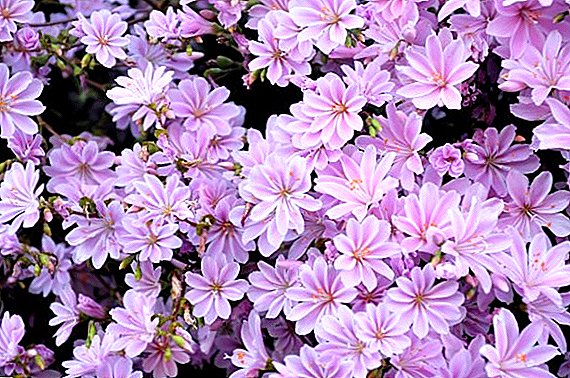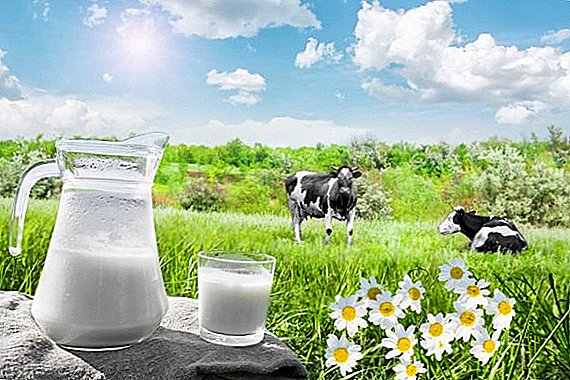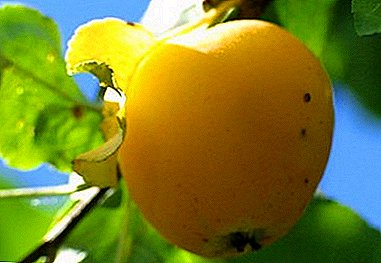
Introduction Lady Gertrude is one of the most attractive varieties of Pelargonium, distinguished by extraordinary beauty and tenderness of its appearance. Care for this plant is somewhat different, but its aesthetics is really worth all the effort involved. This article will tell you what Lady Gertrunda is like, how it looks and blooms, how to reproduce it, and how to deal with diseases and pests that threaten her.
Botanical description and history
Pelargonium Lady Gertrude is a hybrid variety, resulting from the crossing of the zonal and ileum pelargonium. To get this variety, breeders worked for about 25 years. The result of this work is an amazing plant that looks like a very delicate rose.
Lady Gertrude has an underground rhizome with alternating thick and thin sections. On a small number of peduncles appear large rose petals, which, growing and dissolving, take the form of a rose, from which the similarity with the latter is so noticeable.
Also, it is characterized by the presence of large textured decorative leaves. The bush itself is short, it tends to grow in breadth, but rather dense., thanks to which Pelargonium can be given absolutely any shape.
A photo
Below you will see a photo of a flower:



Features of the plant
The main feature of this variety Pelargonium is late flowering. In addition, as mentioned above, of all other species, this one is the most attractive, in the opinion of almost all gardeners, many of whom really dream of getting it.
Moreover, despite its extraordinary beauty, this plant is capable of pleasing the eye with it, even when mistakes are made in caring for it, which is an undoubted advantage for a newbie in this business.
How to plant?
A place
First of all, you need to choose the right place where the plant will be located, which is very important, because The leaves of Pelargonium Lady Gertrude are very gentle and sensitive to direct sunlight.therefore, accordingly, in the house / apartment you need to place it on the windowsill where the light is scattered.
Also, despite the fact that Pelargonium is a very light-loving plant, in the afternoon it is important to have a pot with a plant where the light is much smaller than where it stood before, because from excessive light the leaves of Pelargonium become thin and sluggish, the bush becomes sick and nondescript.
Therefore, based on the above requirements, we can say that It is recommended to put the plant on the western or eastern window-sills, where the sun is less active.
Important! On average, 4–8 hours of exposure to diffused sunlight is sufficient for the active and proper development of this culture.
The soil
For Lady Gertrude's Pelargonium, a loose and nutritious soil is ideal, so you should avoid having different weighting agents in the substrate (for example, clay). It is also important to locate at the bottom of the tank in which it is planned to plant the plant, good drainage. Chipped bricks or ceramsite stones of a very small size are perfect.
 The optimal composition of the substrate for the Pelargonium Lady Gertrude:
The optimal composition of the substrate for the Pelargonium Lady Gertrude:
- Sand - 1 part.
- Peat land - 1 part.
- Sod soil - 1 part.
In the acidic soil, Pelargonium cannot grow, therefore the soil should be slightly acidic or neutral (pH 5.5 - 6.5).
Within a few days after transplantation (young or adult in a larger container or just purchased in a store) plants need to be watered very carefully in order to in no case prevent over-wetting of the substrate.
You can find out whether Pelargonium has taken root by the appearance of new growths on the stem.
How to care?
Lighting
As mentioned above, Lady Gertrude loves diffused sunlight to be provided to her for 4 to 8 hours a day. In winter, fluorescent lamps can be additionally used for continuous growth..
Temperature
In the warm season it is preferable to keep the plant at a temperature of from 20 to 25 degrees, and in the cold season 12 to 15 degrees are allowed. Temperature thresholds, for which in no case can not intercede: in the winter to 10 degrees, in the summer to 30. At these temperatures, the active growth and flowering of pelargonium stops.
Watering
Pelargonium Lady Gertrude loves moderate wateringin which neither drying nor waterlogging of the substrate occurs. The latter is fraught with very rapid decay of the roots, and since the plant is particularly sensitive to excess moisture, this will be followed by the near death of all Pelargonium.
In the warm season (summer - spring), watering should be frequent and slightly abundant, and in cold (autumn - winter) it should be done less frequently and with less water, which in both cases should be at room temperature.
Fertilizer
 In summer and spring (during the growing season), the plant especially needs feeding, which is done 1 time in 2 weeks. For this ideal mineral complexes with potassium - phosphorus composition.
In summer and spring (during the growing season), the plant especially needs feeding, which is done 1 time in 2 weeks. For this ideal mineral complexes with potassium - phosphorus composition.
Nitrogen in the composition of fertilizers adversely affects the state of Pelargonium! In winter, plants are not fed at all.
Rest period (wintering)
In the cold season (mainly winter), Pelargonium, like most other plants, has a dormant period when it rests and gathers strength for further flowering in summer and spring. In winter and autumn, the plant should be watered less often, not fed at all. and contain at a temperature of 12 - 15 degrees.
If during this period all the necessary conditions are met, then in the summer Pelargonium Lady Gertrude will surely please with her lush beautiful flowers.
Common diseases and pests
- In case of lack of nutrition at the edges of the leaves of the plant begins to appear yellowish tint. It is urgently necessary to feed it with mineral fertilizer with phosphorus and potassium. If the color is red, it may mean that Pelargonium lacks magnesium or the temperature in the room where it is located is too low for it.
- If various bulges appear on the leaves, this means that it has been attacked by a spider mite; beige, white and yellow spots leaves aphid. Insecticidal preparations will help to cope with this.
- The whitish plaque on the leaves and the stem indicates the presence of powdery mildew, against which fungicidal preparations are good.
Breeding
Absolutely all types of Pelargonium, including Lady Gertrude, breed in two ways.: seeds and grafting. The second is preferred by the majority gardener because it is simple and quick. It should be produced during the growing season (summer - spring).
 Breeding algorithm by cutting:
Breeding algorithm by cutting:
- Cut off the upper part of the mother plant with a sharp and blade-treated (approximately 6-7 cm). On the cut runaway must be at least three nodes.
- Dry the stalk.
- Root it in a pre-prepared soil.
- 2 - 4 weeks the stalk will take root, after it needs to be transplanted into the pot, in which it will constantly grow.
We offer you to watch a video about cutting pelargonium:
The care of Lady Gertrude's Pelargonium can be carried out both by an experienced florist and a novice in this field.. Under all conditions, the plant will bloom annually, and in winter, as expected, it will gain strength for this. All that is required is a little patience and attentiveness.


